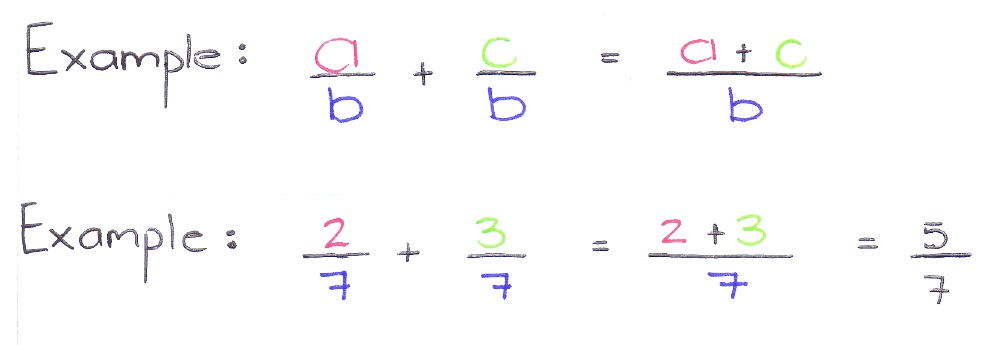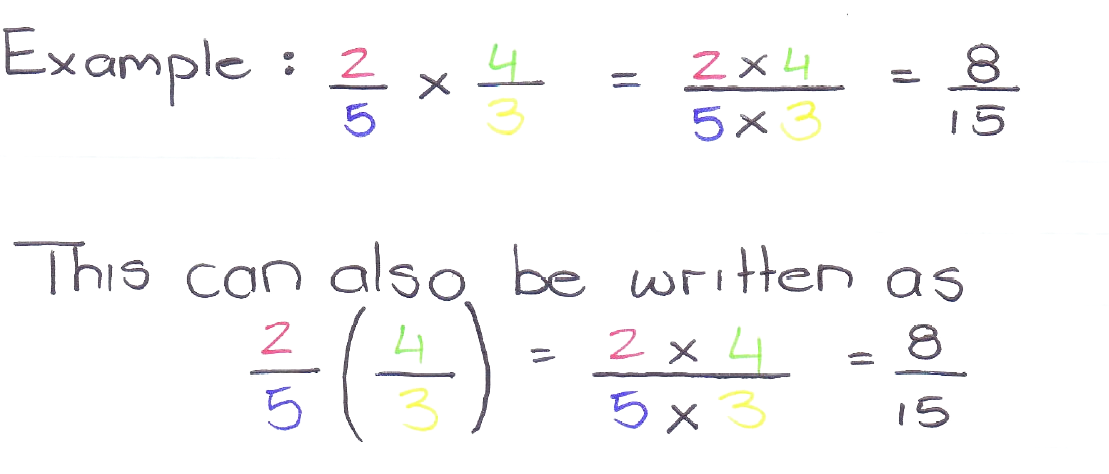In this article our Mathematics teacher, Kendall Born, helps students (and parents) understand how to add, multiply and divide fractions.
Adding fractions
We can only add two fractions together if they both have the same denominator - the number below the line in a fraction.

If the fractions do not have the same denominator, then there are two methods we can use to add them.
First Method

We can multiply the numerator (the number above the line in a fraction) of the first fraction by the denominator of the second fraction, and add it to the numerator of the second fraction, multiplied by the denominator of the first fraction.
The new (and common) denominator is the denominator of the first fraction multiplied by the denominator of the second fraction.

Before we continue to the second method of adding fractions with different denominators, we need to understand how to multiply and divide fractions.
Multiplying fractions
To multiply fractions we simply multiply the numerators and multiply the denominators.

It may be necessary to simplify the fraction after multiplication:

Dividing fractions
For division of two fractions we “tip and times”. After tipping the fraction you’re dividing with, you multiply the numerators with each other and the denominators with each other. Remember to simplify after you’ve multiplied.

Second Method of adding fractions

First we have to find a common denominator. An easy way to do this is to make the common denominator a product of both denominators. Remember, if we multiply the denominator by a number we must also multiply the numerator by the same number.
We take the denominator of the second fraction and multiply both the numerator and denominator of the first fraction by this number. Similarly, we take the denominator of the first fraction and multiply both the numerator and denominator of the second fraction by this number.
Note: d times b = b times d and so both fractions now have a common denominator, so they can be added.
A similar method to the above is to find the Lowest Common Denominator (LCD) or Lowest Common Multiple (LCM) of the denominators

Multiplying fractions with a whole number
We can treat whole numbers as fractions by dividing by 1.

Multiplication by a whole number now follows the same rules as multiplication of fractions.











